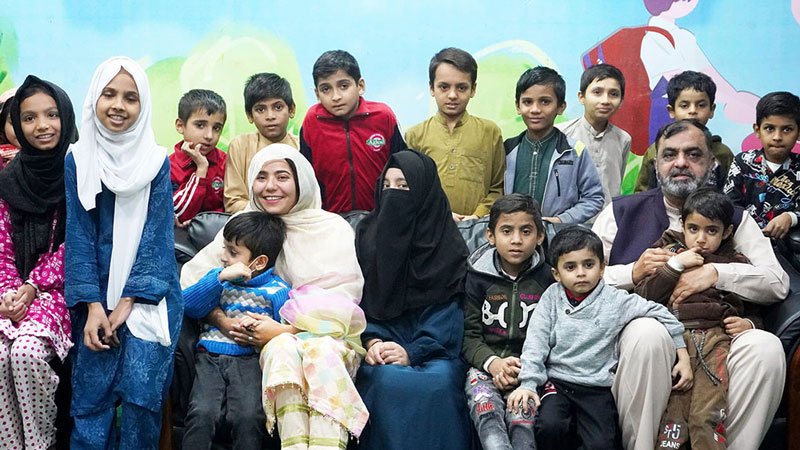
Children orphanages in Pakistan are vital institutions that provide care, protection, and opportunities to orphaned, abandoned, and vulnerable children across the country. In a nation with one of the largest populations of orphaned children in the Muslim world, these facilities fill a critical gap in social services by offering shelter, education, emotional support, and life skills training.
The question “How many orphanages exist for children in Pakistan?” is a crucial one—not only for policymakers and donors but also for every concerned citizen committed to the welfare of the country’s most at-risk population. As we explore this topic in detail, we’ll examine not just the numbers, but also the quality of care, types of orphanages, regional distribution, and the role of key institutions like SOS Children’s Villages Pakistan in shaping the future of orphan care.
Children Orphanages in Pakistan: The Numbers
How Many Orphanages Exist?
Estimating the exact number of children orphanages in Pakistan is challenging due to the lack of a centralized database and the presence of many unregistered facilities. However, data from welfare departments, social service NGOs, and international humanitarian reports provide us with a general understanding:
- Registered Orphanages (Public & NGO-Run): Approximately 650–800
- Unregistered or Informal Homes: Estimated to be 500+
- Government-Run Orphanages: Around 50–60 (under provincial social welfare departments)
- Private & NGO-Run Orphanages: Over 600, including prominent names like SOS Children’s Villages Pakistan
The total number may exceed 1,200 facilities nationwide when informal shelters, madrassas offering accommodation, and religious-based institutions are included.
Breakdown by Region: Where Are Orphanages Located?
Punjab
- Hosts the highest number of orphanages due to its population size.
- Major cities like Lahore, Faisalabad, Multan, and Rawalpindi are home to several well-established institutions.
- Multiple SOS Children’s Villages Pakistan homes are operational here, including the first one opened in Lahore in 1977.
Sindh
- Second highest concentration, particularly in Karachi and Hyderabad.
- A mix of government shelters and private-run homes.
- Urban slums in Karachi contribute heavily to the orphan population.
Khyber Pakhtunkhwa (KPK)
- Many orphanages set up in response to conflict and terrorism-related displacement.
- Cities like Peshawar, Swat, and Abbottabad host several care centers.
Balochistan
- Fewer organized orphanages compared to other provinces.
- Orphaned children often rely on extended families or madrassas due to infrastructure gaps.
Azad Jammu & Kashmir and Gilgit-Baltistan
- A handful of facilities serve children affected by conflict and earthquakes.
- Most are small-scale and depend on local donations.
Types of Orphanages in Pakistan
Not all orphanages operate under the same model. Understanding the differences helps in evaluating the level and quality of care offered.
- Government-Run Shelter Homes
- Provide basic food, shelter, and primary education.
- Often under-resourced and overcrowded.
- Lack specialized staff and individual attention for children.
- NGO-Operated Orphanages
- Vary in size and quality.
- Organizations like SOS Children’s Villages Pakistan follow a family-based care model, ensuring holistic development.
- Others may provide boarding-school-like environments with variable outcomes.
- Religious Institutions (Madrassas)
- Provide shelter and religious education.
- Some lack transparency and formal child protection standards.
- Not all are equipped for psychological or educational development beyond religious training.
- Foster Care or Group Homes
- Emerging trend led by progressive organizations and social workers.
- Emphasize reintegration into society rather than long-term institutionalization.
The SOS Children’s Villages Pakistan Model: A Benchmark for Quality Care
Among the most respected institutions in the country, SOS Children’s Villages Pakistan sets a gold standard for how orphan care should be approached.
Key Features:
- Family-Based Environment: Each child lives in a home with an SOS mother and siblings.
- Education First: Children attend school regularly, with some pursuing higher education.
- Emotional and Psychological Support: In-house counselors help children overcome trauma.
- Health Services: Regular medical checkups and emergency care are available.
- Vocational and Life Skills Training: Prepares children for independent adult life.
With over 17 SOS Villages across the country and numerous associated programs (youth homes, vocational training centers, and schools), SOS has positively impacted the lives of thousands of orphaned and abandoned children.
Quality Over Quantity: Are All Orphanages Effective?
While the increasing number of children orphanages in Pakistan indicates greater awareness, quality remains inconsistent.
Challenges in Many Orphanages:
- Overcrowding and insufficient caregiver-to-child ratios.
- Inadequate funding, leading to poor nutrition, hygiene, and educational support.
- Absence of child protection policies or legal oversight.
- Psychological neglect, especially for trauma-affected children.
Unfortunately, some facilities have faced allegations of abuse, neglect, or religious indoctrination, making monitoring and regulation critical.
Regulation and Government Oversight: The Current Status
Pakistan lacks a centralized national database or regulatory authority to monitor all orphanages. However, steps have been taken at the provincial level.
Progress Made:
- Social Welfare Departments require NGOs to register.
- Some provinces have adopted Child Protection Acts.
- The National Commission on the Rights of Child (NCRC) is working on policy recommendations.
What’s Still Needed:
- Nationwide orphanage accreditation system.
- Minimum care standards across all facilities.
- Regular audits, staff training, and legal protection for children.
- Incentives for foster care and non-institutional models.
Community Participation and Faith-Based Giving
One of the strengths of Pakistani society is its culture of giving. Zakat, Sadaqah, and Khairat are powerful enablers of orphan care.
Many orphanages, including SOS Children’s Villages Pakistan, rely on zakat donations to fund daily operations, education, health, and vocational training.
Ways to Support Orphanages:
- Monthly sponsorship of a child or a home.
- Corporate partnerships through CSR programs.
- Donations during Ramadan and Eid.
- Volunteer teaching, mentoring, or medical services.
The Way Forward: What Pakistan Needs
To ensure all orphaned children grow into capable, confident adults, Pakistan must:
- Establish a National Orphanage Registry
- Centralized monitoring of orphanages nationwide.
- Public database for donors and regulators.
- Promote Foster Care
- Encourage families to adopt or foster orphaned children.
- Offer government support and legal pathways.
- Increase Public-Private Partnerships
- Empower NGOs through transparent funding.
- Collaborate on training, education, and healthcare.
- Raise Public Awareness
- Fight the stigma around institutionalized children.
- Promote success stories through media and community platforms.
Conclusion
Children orphanages in Pakistan are more than just institutions—they are the foundations of hope, resilience, and transformation. As the country faces growing economic and social challenges, these orphanages will continue to play a crucial role in safeguarding the most vulnerable members of our society.
While the number of orphanages is increasing, it is the quality of care that defines success. Organizations like SOS Children’s Villages Pakistan have proven that with compassion, professionalism, and community support, orphaned children can thrive and become valuable contributors to society.
The answer to “How many orphanages exist for children in Pakistan?” is not just a statistic—it is a call to action. Every facility opened, every child protected, and every future secured is a step toward a more humane and inclusive nation.




